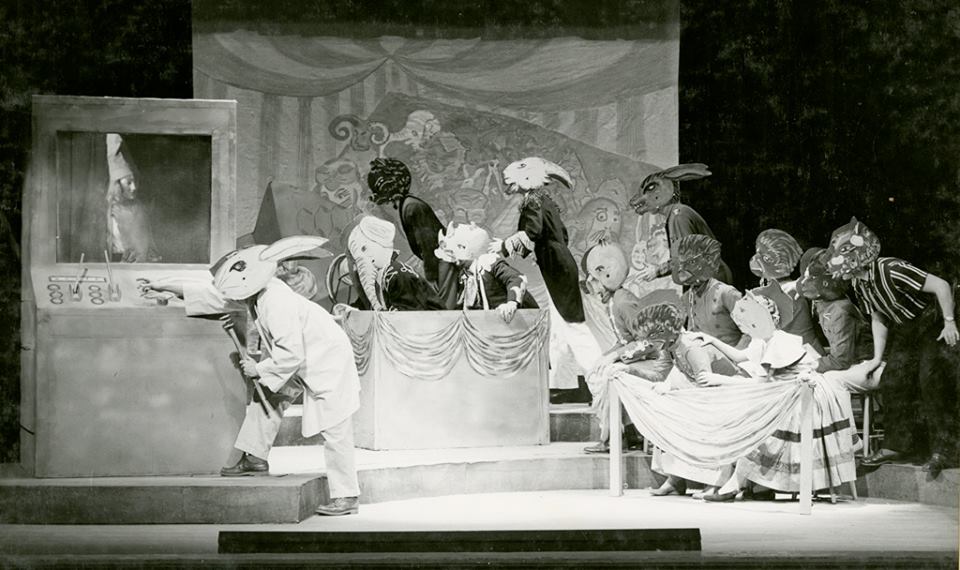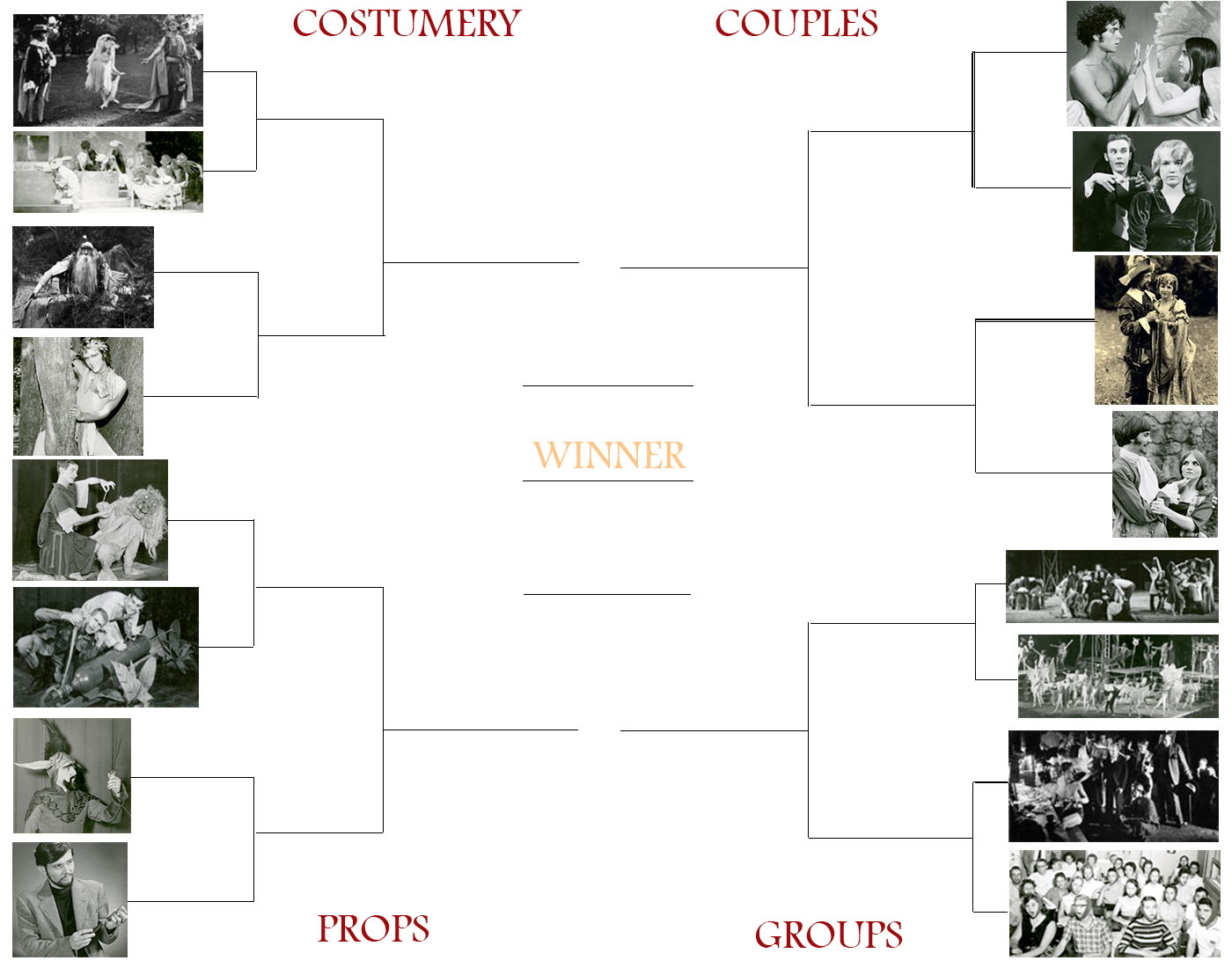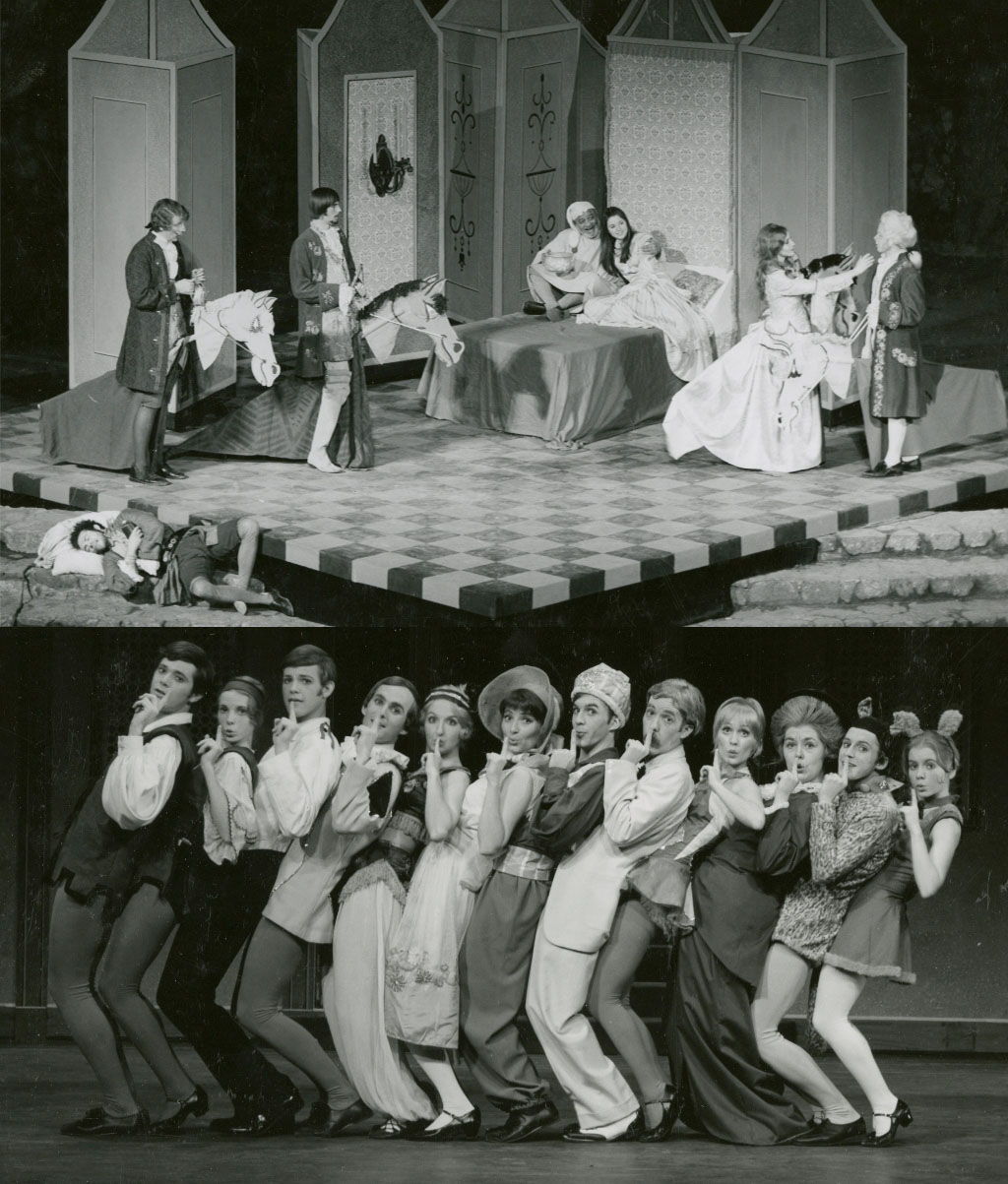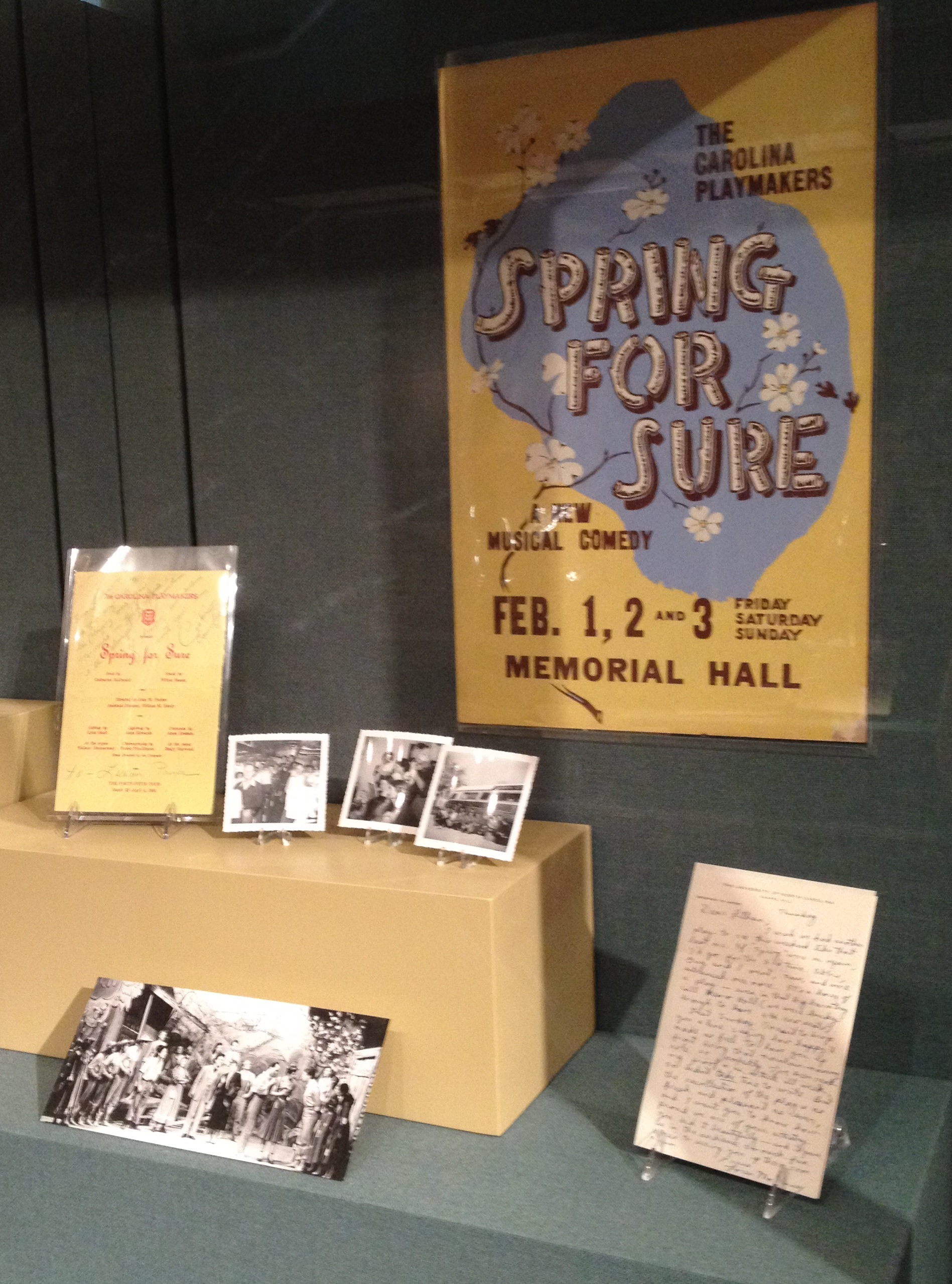The Southern Historical Collection is proud to present our 2014 bracket, Playmakers Madness! In celebration of the current North Carolina Collection Gallery exhibit, Making a People’s Theater: Proff Koch and the Carolina Playmakers, our 2014 bracket will feature some of our favorite photographs from over fifty years of Carolina Playmakers productions.
From production shots to publicity stills to behind the scenes moments, these images from the North Carolina Collection capture the amazing range of performances the Playmakers put on between 1918 and 1976. These are just a few of our favorite acting moments, costumes, and props, and we’re passing them on to you to choose the winner.
Starting today, we’ll be releasing a new poll every day with paired photographs to our Google poll, and also linked to our Facebook page. Here’s one of our runner-up pairings as an example of what you’ll see:
You’ll be able to vote for your favorite in each pairing, and we’ll eliminate contenders, tournament-style, until a winner is crowned. Happy voting, and we hope you enjoy the show!
UPDATE: We have a winner! The votes are in, and your favorite photograph is Experimental Play, 1947!

Playmakers Madness 2014 Champion: Experimental Play (1947) from the UNC Photographic Laboratory Collection, North Carolina Collection Photographic Archives, The Wilson Library, University of North Carolina at Chapel Hill.
This photograph shows a scene from one of the many student-written one act plays produced by the Carolina Playmakers, and we sure wish we knew what it was about.
For more about the Playmakers be sure to check out Making a People’s Theater, on display in the North Carolina Collection Gallery through May 31st.
Thanks for voting, and we’ll see you next year!






![(detail) William Bagley to Mose G. Pierce, from William Bagley Letter Books, SHC #863-z. [detail] William Bagley to Mose G. Pierce (from William Bagley Letter Books, SHC #863-z)](https://blogs.lib.unc.edu/shc/wp-content/uploads/sites/10/2009/08/images-012-300x206.jpg)

